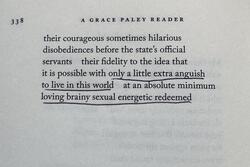Tu B'Av and the Question of Gendered Rituals
Yesterday marked Tu B’Av, the 15th day of the month of Av, a minor Jewish holiday that Wikipedia tells me has become a Jewish equivalent to Valentine’s Day, in that it is an auspicious day for holding weddings and perhaps meeting a romantic partner. The part about weddings makes sense: Tu B’Av comes only 6 after the fast day of Tisha B’Av, and many Jews avoid holding weddings during either the three weeks or the nine days leading up to the fast, since they are considered mournful times. So, we’ve had a dearth of weddings in our community, Tisha B’Av passes, and after so much sadness, a wedding is something to look forward to. But meeting a partner on Tu B’Av? Where is the logic in that?
The Talmud tells us that on the 15th of Av, the young women of Israel would go out dressed in borrowed white dresses and dance in the vineyards. There is meaning in the borrowed dresses: we are told that the women borrowed from one another so as not to embarrass those who did not have a dress. The unmarried men would go to the fields and gaze at them, ostensibly to choose a woman to marry.
Today, nobody dresses in white and goes out to the fields to dance on Tu B’Av – although the ritual is eerily reminiscent of novels I used to read about London debutantes making their entrance into society in the Victorian era. Secular communities in Israel are the ones most likely to celebrate the day, and present day religious practices specific to Tu B’Av are limited to minor liturgical changes. However, the premise of beautiful women presented to men to be chosen as matches still holds in Jewish and non-Jewish communities.
Farideh Goldin tells a story in her memoir, Wedding Song, about how the older women in the Jewish community of Shiraz tried to ensure that young women were properly seated in the women’s section of the synagogue so as to afford single men the best view. Jewish online dating sites, like JDate allow us to build profiles that show off our best qualities (although JDate is arguably more egalitarian and less heteronormative than a lot of non-digital matchmaking). And, on a more secular note, North American women on average tend to spend more time and feel more pressure to ‘look good’ for those around us, which usually means dressing attractively according to male heterosexual preferences.
So is Tu B’Av bad for women, given the cultural scripts it reinforces? I’m not willing to write it off quite yet: I like the ancient ritual’s attempt to diminish the importance of material wealth through borrowed dresses. Another JWA blogger has also noted the potential for a day like Tu B’Av to be used to promote sex-positive aspects of Judaism. Finally, dressing up to feel good about one’s self and one’s body isn’t an inherently bad thing.
But I think I feel the same kind of ambivalence towards Tu B’Av as I do towards many gendered Jewish rituals: I wish they were feminist all on their own, instead of being things that women had to reclaim or re-read for feminist meaning. On the other hand, I’m glad that there is a vibrant Jewish community willing to participate in such reclamations and re-readings.





